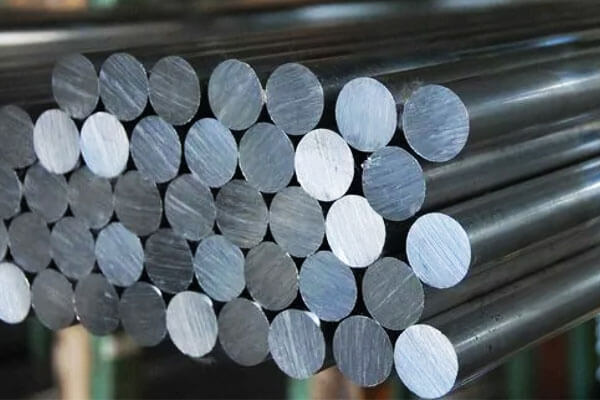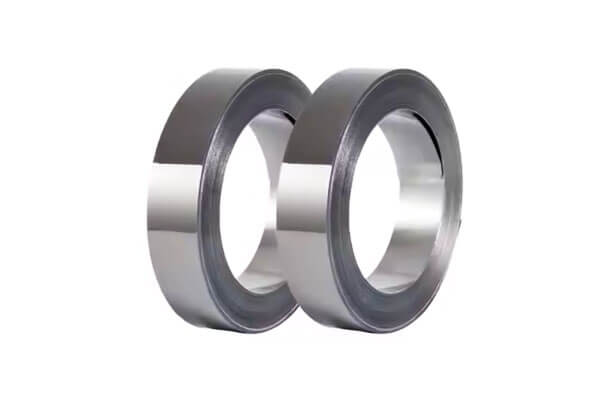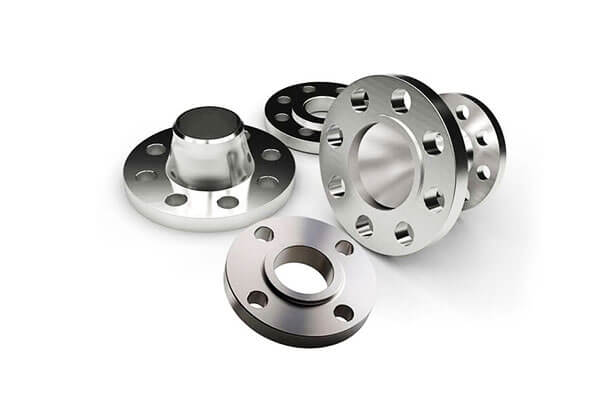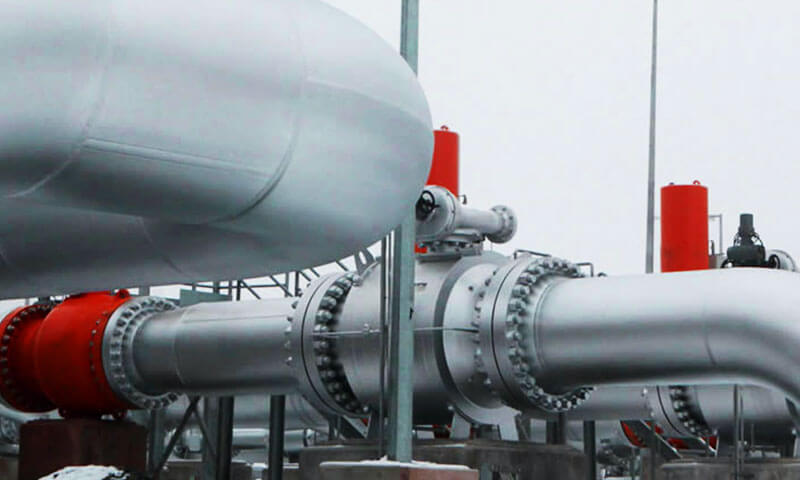1. Ներածություն
Նիկելի վրա հիմնված համաձուլվածքները երկար ժամանակ եղել են էքստրեմալ միջավայրերում օգտագործվող բարձր արդյունավետության նյութերի հիմքը.
Նրանց դիմադրելու ունակությունը Բարձր ջերմաստիճան, օքսիդացում, և մեխանիկական սթրես դրանք դարձնում է անփոխարինելի օդատիենտ, Էլեկտրաէներգիայի սերունդ, եւ արդյունաբերական ծրագրեր.
Այս համաձուլվածքների շարքում, Նիկելի խառնուրդ 75 (2.4951) իր համբավ է վաստակել բացառիկ ջերմային կայունություն, սողացող դիմադրություն, եւ կոռոզիոն դիմադրություն
Ի սկզբանե մշակվել է 1940s Whittle ռեակտիվ շարժիչի տուրբինի շեղբերների համար, այս խառնուրդը շարունակում է ապացուցել իր հուսալիություն և բազմակողմանիություն բազմաթիվ ոլորտներում.
Նրա յուրահատուկ համադրությունը Մեխանիկական ուժ, Ther երմային կայունություն, և պատրաստման հեշտությունը այն դարձնում է գրավիչ ընտրություն պահանջվող հավելվածների համար երկարատև դիմացկունություն բարձր ջերմաստիճանի պայմաններում.
Այս հոդվածը տրամադրում է խորը տեխնիկական վերլուծություն Նիկելի համաձուլվածքից 75 (2.4951), ծածկելը:
- Քիմիական կազմը և միկրոկառուցվածքը, բացատրելով, թե ինչպես է յուրաքանչյուր տարր նպաստում իր գերազանց հատկություններին.
- Ֆիզիկական, ջերմային, և մեխանիկական բնութագրերը, մանրամասնելով դրա կատարումը ծայրահեղ պայմաններում.
- Արտադրության տեխնիկա և մշակման մարտահրավերներ, ընդգծելով պատրաստման լավագույն մեթոդները.
- Արդյունաբերական կիրառություններ և տնտեսական իրագործելիություն, ցույց տալով դրա լայն կիրառումը.
- Ապագա միտումներ և տեխնոլոգիական առաջընթացներ, ուսումնասիրելով համաձուլվածքների զարգացման հաջորդ փուլը.
Այս քննարկման ավարտին, ընթերցողները կունենան ա Alloy-ի համապարփակ իմացություն 75 և ինչու է մնում ա նախընտրելի նյութ պահանջկոտ ինժեներական ծրագրերի համար.
2. Քիմիական կազմ եւ միկրոհամակարգում
Հիմնական բաղադրիչները և դրանց գործառույթները
Նիկելի խառնուրդ 75 (2.4951) է նիկել-քրոմ համաձուլվածք համար նախատեսված չափավոր բարձր ջերմաստիճանի ծրագրեր.

Հետևյալ աղյուսակը ուրվագծում է դրա հիմնական համաձուլվածքային տարրերը և դրանց ներդրումը նյութի կատարողականության մեջ:
| Տարր | Կազմ (%) | Գործառույթ |
|---|---|---|
| Նիկել (Մեջ) | Հավասարակշռություն (~75.0%) | Ապահովում է օքսիդացման և կոռոզիոն դիմադրություն, ապահովում է ջերմային կայունություն. |
| Քրոմ (Խուզարկու) | 18.0– 21,0% | Բարձրացնում է օքսիդացման և մասշտաբի դիմադրությունը, ամրացնում է համաձուլվածքը. |
| Տիտղոս (Է) | 0.2– 0,6% | Կայունացնում է կարբիդները, բարելավում է բարձր ջերմաստիճանի ուժը. |
| Ածխածնային (Գ) | 0.08– 0,15% | Ձևավորում է կարբիդներ՝ ուժեղացնելու կարծրությունը և սողացող դիմադրությունը. |
| Երկաթ (Անք) | ≤5,0% | Ավելացնում է մեխանիկական ուժ՝ չվնասելով կոռոզիոն դիմադրությունը. |
| Սիլիկոն (Մի քանազոր), Մանգան (Ժլատ), Պղնձ (Մգոհել) | ≤1.0%, ≤1.0%, ≤0,5% | Ապահովել փոքր մշակման առավելություններ և օքսիդացման դիմադրություն. |
Միկրոկառուցվածքային վերլուծություն
- Է FCC (Դեմքի կենտրոնացած խորանարդ) բյուրեղային կառուցվածք ապահովում է բարձր ճկունություն և կոտրվածքի ամրություն, որը էական նշանակություն ունի ջերմային հեծանիվների կիրառման համար.
- Տիտանը և ածխածինը ձևավորում են կարբիդներ (Տիֆ, Cr₇C3), զգալիորեն մեծացնելով խառնուրդի սողացող ուժը բարձր ջերմաստիճաններում.
- Մանրադիտակային հետազոտություն (ՈՐԸ, ԹԵՄ, և XRD վերլուծություն) հաստատում է, որ հացահատիկի միասնական կառուցվածքները նպաստում են հոգնածության դիմադրության բարելավմանը.
3. Ֆիզիկական և ջերմային հատկություններ
Հիմնական ֆիզիկական հատկություններ
- Խտություն: 8.37 գ / սմ
- Հալման միջակայք: 1340-1380°C
- Էլեկտրական դիմադրողականություն: 1.09 մմ²/մ (ավելի բարձր, քան չժանգոտվող պողպատից, դարձնելով այն իդեալական ջեռուցման տարրերի համար)
Ջերմային բնութագրեր
| Ունեցվածք | Արժեք | Նշանակություն |
|---|---|---|
| Mal երմային հաղորդունակություն | 11.7 W/m·°C | Ապահովում է ջերմության արդյունավետ արտանետումը բարձր ջերմաստիճանի միջավայրում. |
| Հատուկ ջերմային հզորություն | 461 J/kg·°C | Բարելավում է ջերմային կայունությունը. |
| Mal երմային ընդլայնման գործակից (Ցեխ) | 11.0 μm / m ° ° C (20-100°C) | Պահպանում է կառուցվածքային ամբողջականությունը ջերմային ցիկլով. |
Օքսիդացման դիմադրություն և ջերմային կայունություն
- Պահպանում է օքսիդացման դիմադրություն մինչև 1100°C, դարձնելով այն իդեալական գազատուրբինների և արտանետման համակարգերի համար.
- Պահպանում է մեխանիկական ուժը երկարատև բարձր ջերմաստիճանի ազդեցության տակ, նվազեցնելով դեֆորմացիայի ռիսկը.
Մագնիսական հատկություններ
- Ցածր մագնիսական թափանցելիություն (1.014 մոտ 200 Օերսթեդ) ապահովում է նվազագույն էլեկտրամագնիսական միջամտություն պահանջող ծրագրերի համապատասխանությունը.
4. Նիկելի համաձուլվածքի մեխանիկական հատկությունները և բարձր ջերմաստիճանի արդյունավետությունը 75
Այս բաժինը տրամադրում է նիկելի խառնուրդի համապարփակ վերլուծություն 75 Մեխանիկական հատկություններ, վարքագիծ ծայրահեղ պայմաններում, և թեստավորման մեթոդոլոգիաները գնահատել դրա երկարաժամկետ կատարումը.
Առաձգական ուժ, Բերք տալ ուժ, և երկարացում
Ձգվող հատկությունները սահմանում են խառնուրդի դիմադրողականությունը ստատիկ և դինամիկ բեռնում առանց մշտական դեֆորմացիայի կամ ձախողման.
Նիկելի խառնուրդ 75 պահպանում է բարձր առաձգական ուժ և ողջամիտ ճկունություն լայն ջերմաստիճանի միջակայքում.

Հիմնական առաձգական հատկությունները
| Ջերմաստիճան (° C) | Առաձգական ուժ (MPA) | Բերք տալ ուժ (MPA) | Երկարացում (%) |
|---|---|---|---|
| Սենյակի ջերմաստիճան (25° C) | ~ 600 | ~ 275 | ~ 40 |
| 760° C | ~ 380 | ~ 190 թ | ~ 25 |
| 980° C | ~ 120 | ~ 60 | ~ 10 |
Դիտարկումներ:
- Բարձր ուժ սենյակային ջերմաստիճանում ապահովում է գերազանց կրող կարողություն.
- Ջերմաստիճանի բարձրացման հետ առաձգական ուժի աստիճանական նվազում սպասվում է փափկեցնող էֆեկտների պատճառով.
- Ճկունությունը մնում է բավարար բարձր ջերմաստիճաններում, թույլ տալով սթրեսի վերաբաշխում առանց փխրուն ձախողման.
Այս հատկությունները դարձնում են Նիկելի խառնուրդ 75 հարմար է բարձր ջերմաստիճանի և մեխանիկական սթրեսի ենթարկված բաղադրիչների համար, ինչպիսիք են տուրբինի շեղբերները, արտանետվող խողովակներ, և ջերմափոխանակիչի մասեր.
Սողացող դիմադրություն և երկարաժամկետ ծանրաբեռնվածության կայունություն
Սողանքը կարևոր գործոն է օգտագործվող նյութերի համար շարունակական բարձր ջերմաստիճանի կիրառումներ. Այն վերաբերում է դանդաղը, ժամանակից կախված դեֆորմացիա մշտական սթրեսի տակ.
Սողանքին դիմակայելու ունակությունը որոշում է երկարակեցություն և հուսալիություն խառնուրդից 75 ծայրահեղ միջավայրերում.
Creep Performance Data
| Ջերմաստիճան (° C) | Սթրես (MPA) | Ժամանակն է 1% Սողալ լարվածություն (ժ) |
|---|---|---|
| 650° C | 250 | ~ 10000 |
| 760° C | 150 | ~ 8000 |
| 870° C | 75 | ~ 5000 |
Հիմնական պատկերացումներ:
- Ուժեղ սողացող դիմադրություն չափավոր ջերմաստիճաններում (650-760°C) երկարացնում է բաղադրիչի կյանքի տևողությունը ռեակտիվ շարժիչներում և էլեկտրակայանների տուրբիններում.
- 870°C-ում, սողացող արագությունը զգալիորեն մեծանում է, երկարատև ազդեցության համար դիզայնի զգույշ նկատառումներ են պահանջում.
- Խառնուրդ 75 գերազանցում է սովորական չժանգոտվող պողպատներին, դարձնելով այն ավելի հուսալի ընտրություն բարձր ջերմաստիճանի ինժեներական ծրագրեր.
Դեպի հետագա բարձրացնել սողացող դիմադրությունը, արտադրողները հաճախ օպտիմալացնել հացահատիկի չափը և կատարել վերահսկվող ջերմային մշակումներ, ապահովելով երկարատև օգտագործման ընթացքում միկրոկառուցվածքային կայունություն.
Հոգնածության ուժ և ճեղքվածքի ամրություն
Հոգնածության դիմադրություն ցիկլային բեռնման ներքո
Դա մեծ մտահոգություն է ենթարկված բաղադրիչներում կրկնվող ջերմային ցիկլը և մեխանիկական սթրեսը, ինչպիսիք են նրանք օդատիեզերական շարժիչ համակարգեր և գազային տուրբիններ.
Խառնուրդ 75 ցուցանմուշներ ուժեղ հոգնածության դիմադրություն, կանխել վաղաժամ ձախողումը ցիկլային բեռնման պատճառով.
| Ջերմաստիճան (° C) | Սթրեսի ամպլիտուդ (MPA) | Անհաջողության ցիկլեր (x106) |
|---|---|---|
| Սենյակի ջերմաստիճան (25° C) | 350 | ~ 10 |
| 650° C | 250 | ~ 6 |
| 760° C | 180 | ~ 4 |
Կոտրվածքների մեխանիկա և ճաքերի տարածում
Նիկելի խառնուրդ 75 կոտրվածքի ամրությունը համեմատաբար բարձր է, կանխարգելող աղետալի ձախողում ճաքերի առաջացման և տարածման պատճառով.
Սակայն, միկրոկառուցվածքային թերություններ, կարբիդային տեղումներ, և երկարատև ջերմային ազդեցություն կարող է ազդել ճաքերի աճի տեմպերի վրա.
- Միջգրանուլային և տրանսգրանուլային կոտրվածքների ռեժիմներ նկատվել են հոգնածության թեստավորման ժամանակ, կախված ջերմաստիճանի և սթրեսի մակարդակը.
- Հացահատիկի սահմանների ամրացման օպտիմիզացված տեխնիկա (վերահսկվող հովացման արագության և աննշան համաձուլվածքների հավելումների միջոցով) բարելավել ճաքերի դիմադրություն.
Ջերմային կայունություն և օքսիդացման դիմադրություն
Նիկելի խառնուրդ 75 նախատեսված է օքսիդացման դիմադրություն մինչև 1100°C, դարձնելով այն հարմար բաղադրիչների համար այրման միջավայրեր և բարձր ջերմաստիճանի ռեակտորներ.
Հիմնական ջերմային հատկությունները
| Ունեցվածք | Արժեք | Նշանակություն |
|---|---|---|
| Mal երմային հաղորդունակություն | 11.7 W/m·°C | Թույլ է տալիս ջերմության ցրում բարձր ջերմաստիճանի ծրագրերում. |
| Հատուկ ջերմային հզորություն | 461 J/kg·°C | Ապահովում է ջերմային կայունությունը. |
| Օքսիդացման սահմանը | 1100° C | Ապահովում է մակերեսի գերազանց պաշտպանություն. |
| Ջերմային ընդարձակման գործակից (20-100°C) | 11.0 μm / m ° ° C | Նվազեցնում է ջերմային սթրեսը ջեռուցման և հովացման ցիկլերի ընթացքում. |
Օքսիդացում և մակերեսային կայունություն
- Քրոմ (18– 21%) ձեւավորում է կայուն օքսիդային շերտ, պաշտպանելով համաձուլվածքը բարձր ջերմաստիճանի քայքայումից.
- Ծծմբի և ֆոսֆորի ցածր պարունակություն նվազագույնի է հասցնում փխրունությունը ջերմային հեծանվային կիրառություններում.
- Համատեղելի է ջերմային պատնեշի ծածկույթների հետ (TBC-ներ) և ալյումինացված ծածկույթներ օքսիդացման դիմադրության հետագա բարձրացման համար.
5. Նիկելի համաձուլվածքի արտադրության և վերամշակման տեխնոլոգիաներ 75
Նիկելի համաձուլվածքներ – համաձուլվածքներ 75 լայնորեն կիրառվում է բարձր ջերմաստիճանի կիրառություններում,
ճշգրիտ անհրաժեշտություն արտադրության և վերամշակման տեխնիկա պահպանել իր մեխանիկական ամբողջականություն, Ther երմային կայունություն, և օքսիդացման դիմադրություն.
Այս բաժինը ուսումնասիրում է արտադրության առաջնային մեթոդներ, ջերմային բուժման ընթացակարգեր, եռակցման մարտահրավերներ,
և մակերեսների հարդարման տեխնոլոգիաներ որոնք բարձրացնում են համաձուլվածքի արդյունավետությունը պահանջկոտ միջավայրերում.
Առաջնային պատրաստման տեխնիկա
Նիկելի համաձուլվածքի արտադրություն 75 բաղադրիչները ներառում են ձուլման, դավաճանություն, շարժակազմ, և հաստոցներ, յուրաքանչյուրն ունի հատուկ առավելություններ՝ կախված դիմումից.
Ձուլում
- Ներդրումային ձուլում սովորաբար օգտագործվում է արտադրելու համար բարդ օդատիեզերական բաղադրիչներ, Տուրբինային շեղբեր, և արտանետվող մասերը.
- Ավազի ձուլում և կենտրոնախույս ձուլում համար նախընտրելի են լայնածավալ արդյունաբերական վառարանների և ջերմափոխանակիչների բաղադրիչներ.
- Մարտահրավերներ: Բարձր ջերմաստիճանի ամրացումը կարող է հանգեցնել նեղացման ծակոտկենություն, պահանջող հովացման արագության ճշգրիտ վերահսկում.
Դարբնագործություն և գլանվածք
- Տաք դարբնոցը բարձրացնում է հացահատիկի կառուցվածքը և մեխանիկական հատկությունները, Այն իդեալական դարձնելով կրող բաղադրիչներ.
- Սառը գլանվածքն օգտագործվում է բարակ թիթեղների և շերտերի արտադրության համար, ապահովելով միասնական հաստություն և մակերեսի ծածկույթ.
- Նպաստներ:
-
- Վերականգնում է հացահատիկի կառուցվածքը → Բարելավում է մեխանիկական ուժը.
- Նվազեցնում է ներքին թերությունները → Բարձրացնում է հոգնածության դիմադրությունը.
- Բարձրացնում է աշխատունակությունը → Պատրաստում է համաձուլվածքը հետագա մշակման համար.
Մեքենաների մշակման բնութագրերը
Նիկելի խառնուրդ 75 ներկայացնում է չափավոր վերամբարձ դժվարություն շնորհիվ դրա աշխատանքի կարծրացման բարձր արագություն և ամրություն.
| Մեքենաների սեփականություն | Ազդեցությունը վերամշակման վրա |
|---|---|
| Աշխատանքի կարծրացում | Կտրման արագությունները պետք է օպտիմիզացված լինեն գործիքի մաշվածությունը նվազագույնի հասցնելու համար. |
| Mal երմային հաղորդունակություն (Ցածր) | Հաստոցների մշակման ընթացքում առաջացնում է ավելորդ ջերմություն. |
| Չիպի ձևավորում | Պահանջում է սուր կտրող գործիքներ՝ բարձր ջերմային դիմադրությամբ. |
Լավագույն հաստոցների պրակտիկա:
- Օգտագործեք կարբիդ կամ կերամիկական կտրող գործիքներ համաձուլվածքի ամրությունը կարգավորելու համար.
- Աշխատանքի տեղավորել բարձր ճնշման հովացման համակարգեր կառավարել ջերմության կուտակումը.
- Օպտիմալացնել կտրման արագություններ (30–50 մ/I) և կերակրման տոկոսադրույքները աշխատանքի կարծրացումը կանխելու համար.

Ջերմային մշակում և ջերմային մշակում
Ջերմային բուժումը զգալիորեն ազդում է Մեխանիկական հատկություններ, սթրեսի դիմադրություն, և միկրոկառուցվածքային կայունություն Նիկելի համաձուլվածքից 75.
Հիմնական ջերմային բուժման գործընթացները
| Ընթացք | Ջերմաստիճան (° C) | Տեղավորել |
|---|---|---|
| Անողորմ | 980-1065°C | Փափկեցնում է նյութը, ազատում է սթրեսը, և բարելավում է աշխատունակությունը. |
| Լուծում Բուժում | 980-1080°C | Լուծում է կարբիդային նստվածքները, համասեռացնում է միկրոկառուցվածքը. |
| Ծերացում | 650-760°C | Բարձրացնում է սողացող դիմադրությունը և բարձր ջերմաստիճանի ուժը. |
Ջերմային բուժման առավելությունները:
- Բարելավում է հացահատիկի մաքրումը, բարձրացնելով հոգնածության ուժը.
- Նվազեցնում է ներքին մնացորդային սթրեսները, նվազագույնի հասցնելով աղավաղումները բաղադրիչներում.
- Բարձրացնում է սողացող դիմադրությունը, ապահովելով երկարակեցություն բարձր ջերմաստիճանի պայմաններում.
Եռակցման և միացման ընթացակարգեր
Նիկելի խառնուրդ 75 կարելի է զոդել տարբեր մեթոդներով, բայց վերահսկել ջերմության մուտքը և կանխել կարբիդային տեղումները շատ կարևոր է մեխանիկական ամբողջականությունը պահպանելու համար.
Եռակցման մարտահրավերներ:
- Ճեղքման ռիսկ: Բարձր ջերմային ընդլայնումը մեծանում է մնացորդային սթրես և տաք ճաքերի զգայունություն.
- Օքսիդացման զգայունություն: Պահանջում է իներտ գազի պաշտպանություն (Արգոն, Հելիում) մակերեսի աղտոտումը կանխելու համար.
- Կարբիդի տեղումներ: Ջերմության ավելցուկ մուտքագրումը կարող է հանգեցնել կարբիդի առաջացման, նվազեցնելով ճկունությունը և ամրությունը.
Եռակցման առաջարկվող մեթոդներ:
| Եռակցման գործընթաց | Առավելություններ | Մարտահրավերներ |
|---|---|---|
| TIG Welding (Շրթնային) | Ճշգրիտ հսկողություն, նվազագույն ջերմության ներդրում | Ավելի դանդաղ, քան MIG-ը, պահանջում է հմուտ գործողություն. |
| MIG Welding (Ծնոց) | Ավելի արագ տեղադրում, լավ է հաստ հատվածների համար | Ավելի բարձր ջերմության ներդրումը կարող է հանգեցնել կարբիդային տեղումների. |
| Electron Beam Welding (EMS) | Խորը ներթափանցում, նվազագույն ջերմային աղավաղում | Սարքավորումների բարձր արժեքը. |
✔ Լավագույն պրակտիկա: Եռակցումից հետո ջերմային բուժում (Փող) մոտ 650-760°C դեպի թեթևացնել մնացորդային սթրեսը և կանխել ճաքերը.
Մակերեւութային մշակումներ և ծածկույթներ
Մակերեւութային բուժում բարելավել օքսիդացման դիմադրություն, Կոռոզիոն դիմադրություն, և մեխանիկական մաշվածության դիմադրություն, հատկապես բաղադրիչների համար Ծայրահեղ միջավայրեր.
Օքսիդացման դիմացկուն ծածկույթներ
- ալյումինացնող: Ձևավորում է պաշտպանիչ Al2O3 շերտ, գրավում օքսիդացման դիմադրություն մինչև 1100°C.
- Ջերմային խոչընդոտ ծածկույթներ (TBC-ներ): Իտրիա-կայունացված ցիրկոնիա (ԵՍԶ) ծածկույթները ապահովում են ջերմամեկուսացում ռեակտիվ շարժիչներում.
Կոռոզիայի պաշտպանություն
- Էլեկշռում: Բարձրացնում է մակերեսի հարթությունը, նվազեցնելով սթրեսի կենտրոնացումը.
- Նիկելապատում: Բարելավում է կոռոզիոն դիմադրությունը ծովային և քիմիական մշակման կիրառություններ.
Մաշվածության դիմացկուն ծածկույթներ
- Պլազմային Սփրեյ Ծածկույթներ: Ավելացնում է ա կերամիկական կամ կարբիդային շերտ, նվազեցնելով մակերեսի քայքայումը բարձր շփման միջավայրեր.
- Ion Nitriding: Մակերեւույթը կարծրացնում է ավելի լավ մաշվածության և հոգնածության դիմադրություն.
✔ Լավագույն պրակտիկա: Ընտրելով ծածկույթների հիման վրա գործառնական միջավայր (ջերմաստիճան, մեխանիկական սթրես, և քիմիական ազդեցություն) ապահովում է առավելագույն ամրություն.
Որակի վերահսկման և փորձարկման մեթոդներ
Պահպանելու համար բարձր կատարողականություն և հուսալիություն, Նիկելի խառնուրդ 75 բաղադրիչները ենթարկվում են որակի վերահսկման խիստ ընթացակարգեր.
Ոչ կործանարար փորձարկում (Նիդ)
- Ռենտգեն հետազոտություն: Հայտնաբերում է ներքին ծակոտկենությունը և դատարկությունները ձուլածո կամ եռակցված բաղադրիչներում.
- Ուլտրաձայնային փորձարկում (Ut): Գնահատում է ստորգետնյա թերությունները՝ առանց նյութը վնասելու.
- Ներկի ներթափանցման ստուգում (ՀՏՎ): Բացահայտում է տուրբինի շեղբերների և օդատիեզերական մասերի մակերեսային ճաքերը.
Միկրոկառուցվածքային վերլուծություն
- Սկանավորող էլեկտրոնային մանրադիտակ (ՈՐԸ): Ուսումնասիրում է հացահատիկի սահմանները և կարբիդի բաշխումը.
- Ռենտգենյան դիֆրակցիա (XRD): Որոշում է փուլային կազմը և բյուրեղագրական փոփոխությունները ջերմային բուժումից հետո.
Մեխանիկական փորձարկում
- Առաձգական փորձարկում (ASTM E8): Չափում է ելքի ուժը, վերջնական առաձգական ուժ, և երկարացում.
- Կարծրության փորձարկում (Ռոքվել, Վիկերս): Գնահատում է մակերեսի կարծրությունը ջերմային բուժումից հետո.
- Սողացող և հոգնածության փորձարկում (ASTM E139, E466): Ապահովում է երկարաժամկետ ամրություն ցիկլային և ստատիկ բեռների ներքո.
✔ Լավագույն պրակտիկա: Իրականացնելով ա Վեց Սիգմայի վրա հիմնված որակի վերահսկման համակարգ բարձրացնում է հետևողականությունը և նվազագույնի է հասցնում բարձր արդյունավետության բաղադրիչների թերությունները.
6. Ստանդարտներ, Տեխնիկական պայմաններ
Որակի և հետևողականության պահպանումը Alloy-ի համար առաջնային է մնում 75. Արտադրողները պահպանում են միջազգային խիստ ստանդարտները և իրականացնում են որակի վերահսկողության խիստ միջոցառումներ.
Խառնուրդ 75 համապատասխանում է բազմաթիվ միջազգային չափանիշներին, ներառյալ:
Ամերիկա: N06075
Բրիտանական ստանդարտներ (Բ.Ս): HR5, HR203, HR403, HR504
DIN ստանդարտներ: 17742, 17750– 17752 թ
ISO ստանդարտներ: 6207, 6208, 9723– 9725
AECMA Pr EN ստանդարտներ
7. Նիկելի համաձուլվածքի սահմանային հետազոտություններ և տեխնոլոգիական մարտահրավերներ 75 (2.4951)
Նորարարություններ համաձուլվածքների դիզայնում
Հաշվողական նյութագիտություն
Վերջին առաջխաղացումները մեքենայական ուսուցում (ՄԼ) և խտության ֆունկցիոնալ տեսությունը (DFT) հեղափոխում են համաձուլվածքների օպտիմալացում.
Սրանք հաշվողական մոդելներ նվազեցնել փորձարկման և սխալի ավանդական մեթոդների անհրաժեշտությունը և արագացնել բարելավված նյութերի մշակումը.
🔹 Ա 2023 ուսումնասիրություն MIT-ի Նյութերի հետազոտական լաբորատորիայի կողմից օգտագործված ML ալգորիթմներ Alloy 75-ի տիտանի-ածխածնի հարաբերակցությունը բարելավելու համար, որի արդյունքում ա 15% 900°C ջերմաստիճանում սողացող դիմադրության բարելավում.
🔹 DFT սիմուլյացիաները կանխատեսում են փուլային կայունությունը ծայրահեղ պայմաններում, ապահովելով ավելի լավ օքսիդացման և հոգնածության դիմադրություն հաջորդ սերնդի հավելվածներում.
Նանո-ինժեներական նստվածքներ
Գիտնականները ուսումնասիրում են նանո կառուցվածքային տեխնիկա բարձրացնելու համար Մեխանիկական հատկություններ Նիկելի համաձուլվածքից 75.
🔹 Գերմանական օդատիեզերական կենտրոն (DLR) հաջողությամբ ինտեգրվել է 5-20 նմ գ (Ni₃Ti) նստվածքները մեջ խառնուրդ միջոցով տաք իզոստատիկ սեղմում (ՀԻՊ).
🔹 Սա նանո-նստվածքի ձևավորումը բարելավում է հոգնածության դիմադրությունը 18%, թույլ տալով բաղադրիչներին դիմանալ 100,000+ ջերմային ցիկլեր ռեակտիվ շարժիչներում.
Հիբրիդային խառնուրդի մշակում
Համատեղելով Նիկելի խառնուրդ 75 կերամիկական կոմպոզիտներով առաջանում է որպես ա հաջորդ սերնդի նյութական ռազմավարություն.
🔹 Այն Եվրոպական միության հորիզոն 2020 ծրագիրը ֆինանսավորում է հետազոտությունը սիլիցիումի կարբիդ (SiC) Ալյումինե մանրաթելերով ամրացված տարբերակները 75, հանգեցնելով նախատիպերի հետ 30% ավելի բարձր հատուկ ուժ 1100°C-ում.
🔹 Այս նորամուծությունը ճանապարհ է հարթում դեպի հիպերձայնային ինքնաթիռ, գերարդյունավետ տուրբիններ, և հաջորդ սերնդի շարժիչ համակարգեր.
Հավելանյութերի արտադրություն (Ես) Ճեղքումներ
Լազերային փոշի Bed Fusion (Lpbf) Ընդլայնումներ
3D տպագրական տեխնոլոգիաներ փոխակերպվել են Նիկելի խառնուրդ 75 բաղադրիչների արտադրություն, զգալիորեն նվազեցնելով նյութական թափոնների և կապարի ժամկետները.

🔹 GE հավելում հաջողությամբ 3D- տպագրված տուրբինի շեղբեր հետ 99.7% խտությունը օգտագործելով LPBF.
🔹 Օպտիմիզացված լազերային պարամետրեր (300 W հզորություն, 1.2 մ/վ սկանավորման արագություն) հանգեցրել են 40% հետմշակման ծախսերի կրճատում, դեռ պահպանելով ASTM առաձգական ուժի ստանդարտներ.
Մարտահրավերներ հավելանյութերի արտադրության մեջ
Չնայած այս բեկումներին, մնացորդային սթրես և անիզոտրոպ մեխանիկական հատկություններ մնում են հիմնական խոչընդոտները.
🔹 Ա 2024 ուսումնասիրությունը Fraunhofer ինստիտուտի կողմից հայտնաբերվել է 12% զիջման ուժի փոփոխականություն կառուցման տարբեր ուղղություններով, ընդգծելով անհրաժեշտությունը հետտպագրությունից հետո ջերմային բուժում՝ միկրոկառուցվածքը համասեռացնելու համար.
🔹 Ընթացիկ ջանքերը կենտրոնանում են գործընթացի insitu մոնիտորինգ, ապահովելով անսարք կառույցների միջոցով իրական ժամանակի լազերային պարամետրերի ճշգրտումներ.
Խելացի բաղադրիչներ և սենսորների ինտեգրում
Իրական ժամանակի վիճակի մոնիտորինգ
-ի ինտեգրումը օպտիկամանրաթելային սենսորներ խառնուրդի մեջ 75 բաղադրիչները բացում է նոր դարաշրջանը կանխատեսելի սպասարկում և կատարողականի հետևում.
🔹 Siemens Energy ունի ներկառուցված օպտիկամանրաթելային սենսորներ Նիկելի խառնուրդ 75 Տուրբինային շեղբեր, ապահովելով լարվածության վերաբերյալ կենդանի տվյալներ, ջերմաստիճան, և օքսիդացման արագությունները.
🔹 Սա IoT-ի վրա հիմնված մոտեցումը նվազեցրել է չպլանավորված պարապուրդը 25%, արդյունավետության բարձրացում էլեկտրաէներգիայի արտադրության և ավիացիայի ոլորտները.
8. Եզրափակում
Եզրափակելով, Նիկելի համաձուլվածքի խառնուրդ 75 (2.4951) ներկայացնում է քիմիական ճշգրտության ներդաշնակ խառնուրդ, ֆիզիկական ամրություն, և մեխանիկական հուսալիություն.
Դրա էվոլյուցիան վաղ ավիատիեզերական տուրբինի շեղբերից մինչև արդյունաբերական անփոխարինելի բաղադրիչները ընդգծում է դրա մնայուն արժեքը.
Քանի որ արտադրական տեխնիկան զարգանում է, և հետազոտությունները շարունակում են առաջ մղել սահմանները, Խառնուրդ 75 մնում է ռազմավարական ընտրություն բարձր ջերմաստիճանի և բարձր սթրեսային կիրառությունների համար.
Եթե դուք փնտրում եք բարձրորակ նիկելի խառնուրդ 75 արտադրանք, ընտրելը Սա Ձեր արտադրության կարիքների համար կատարյալ որոշում է.



